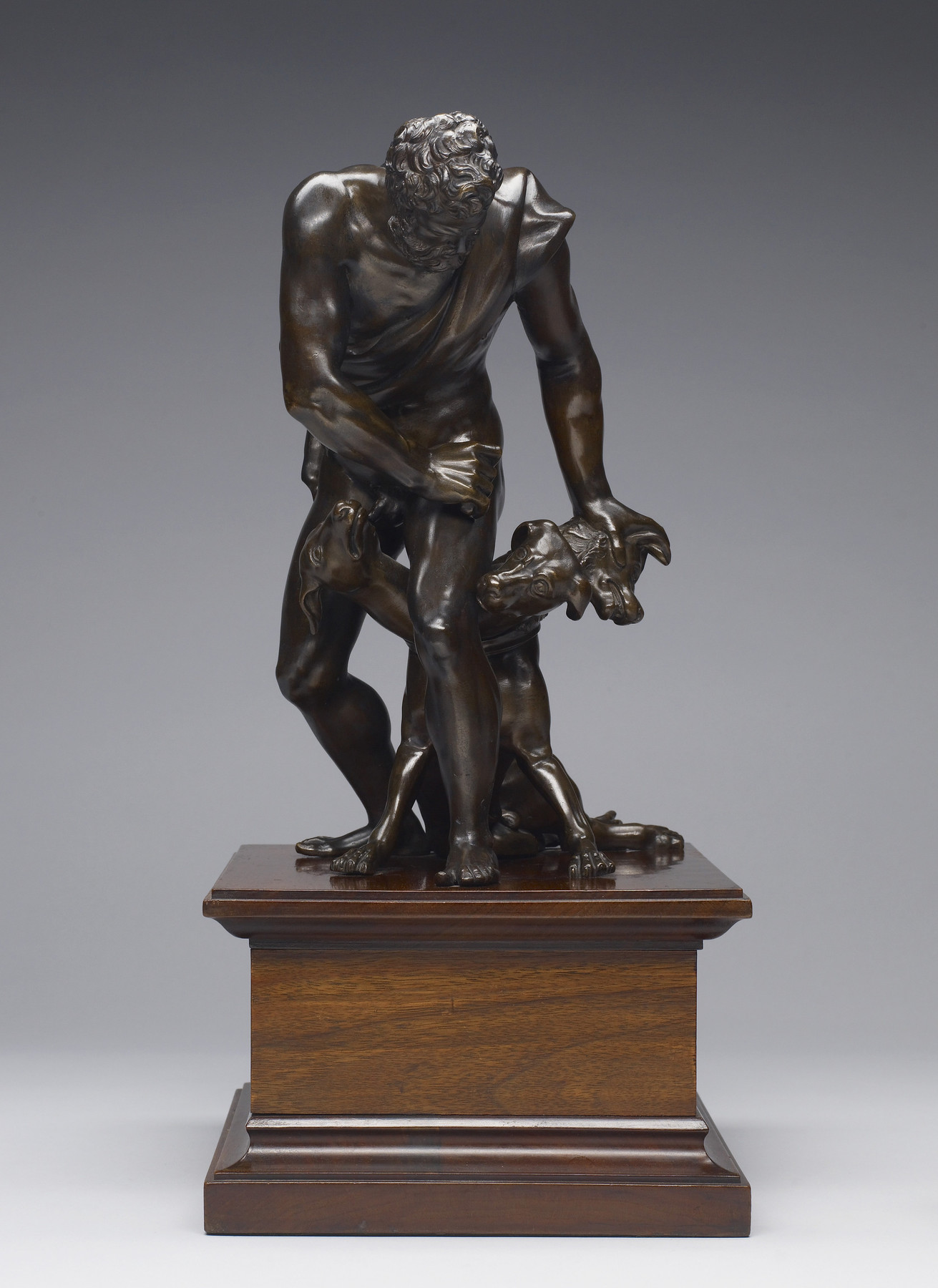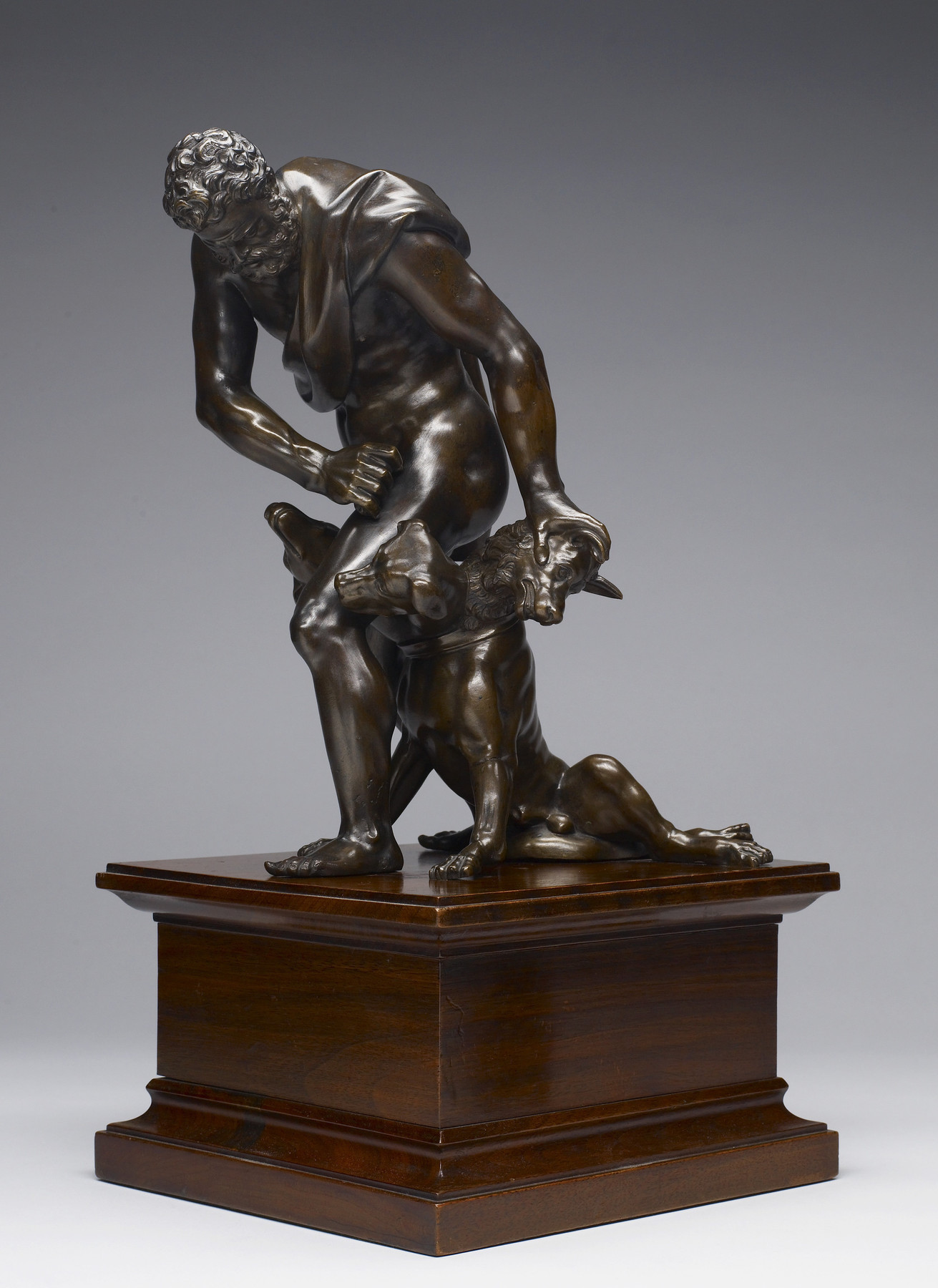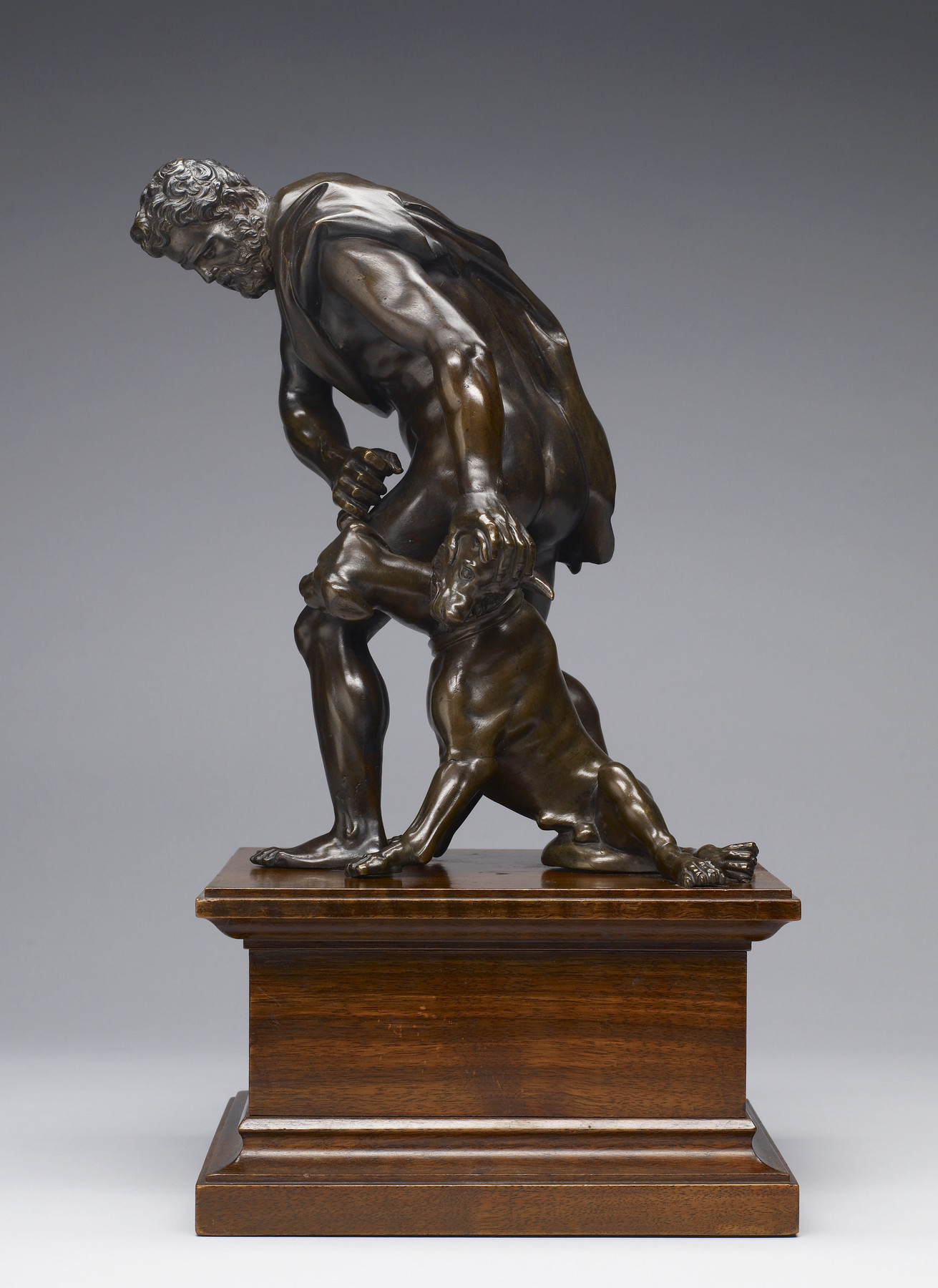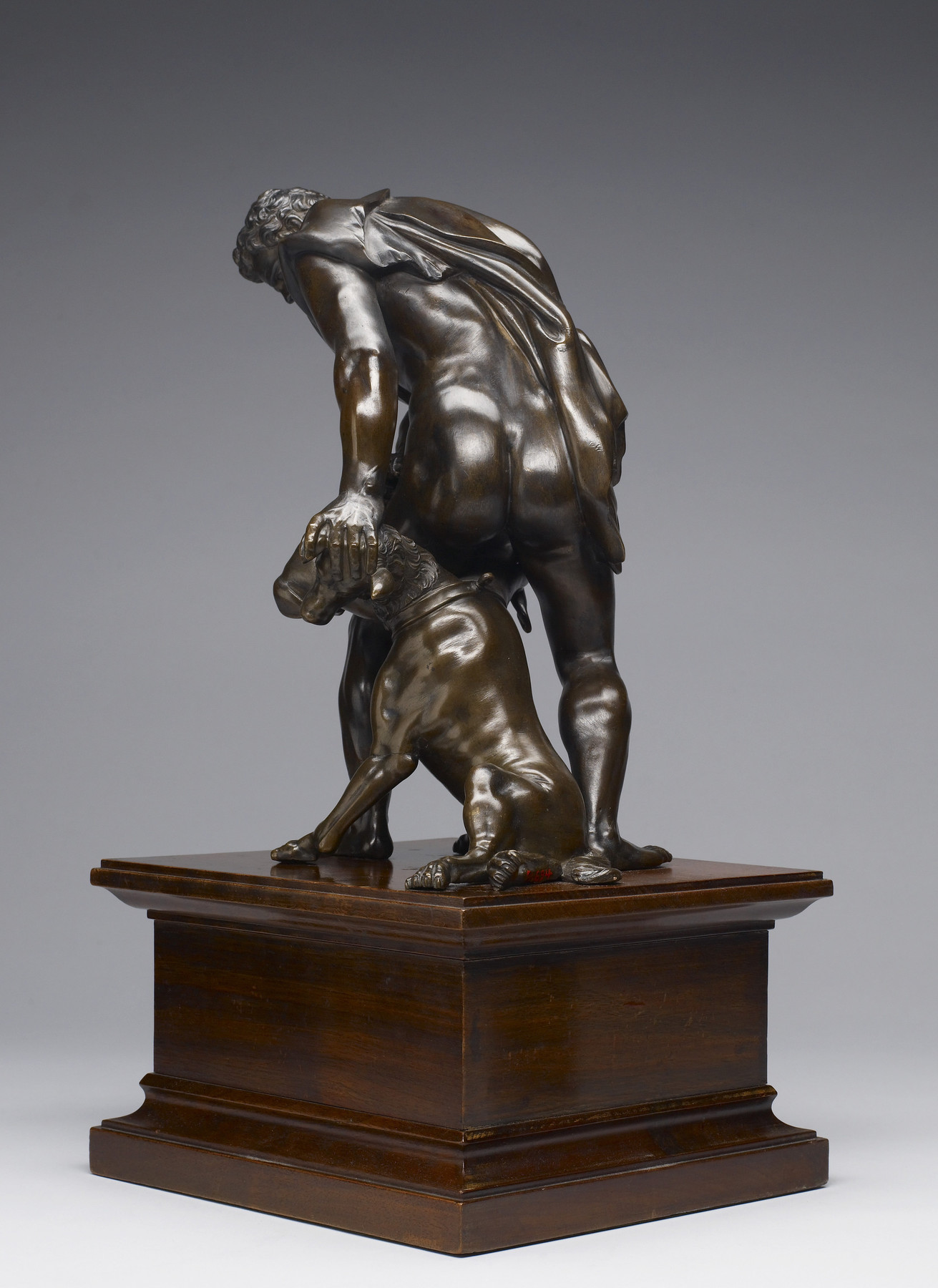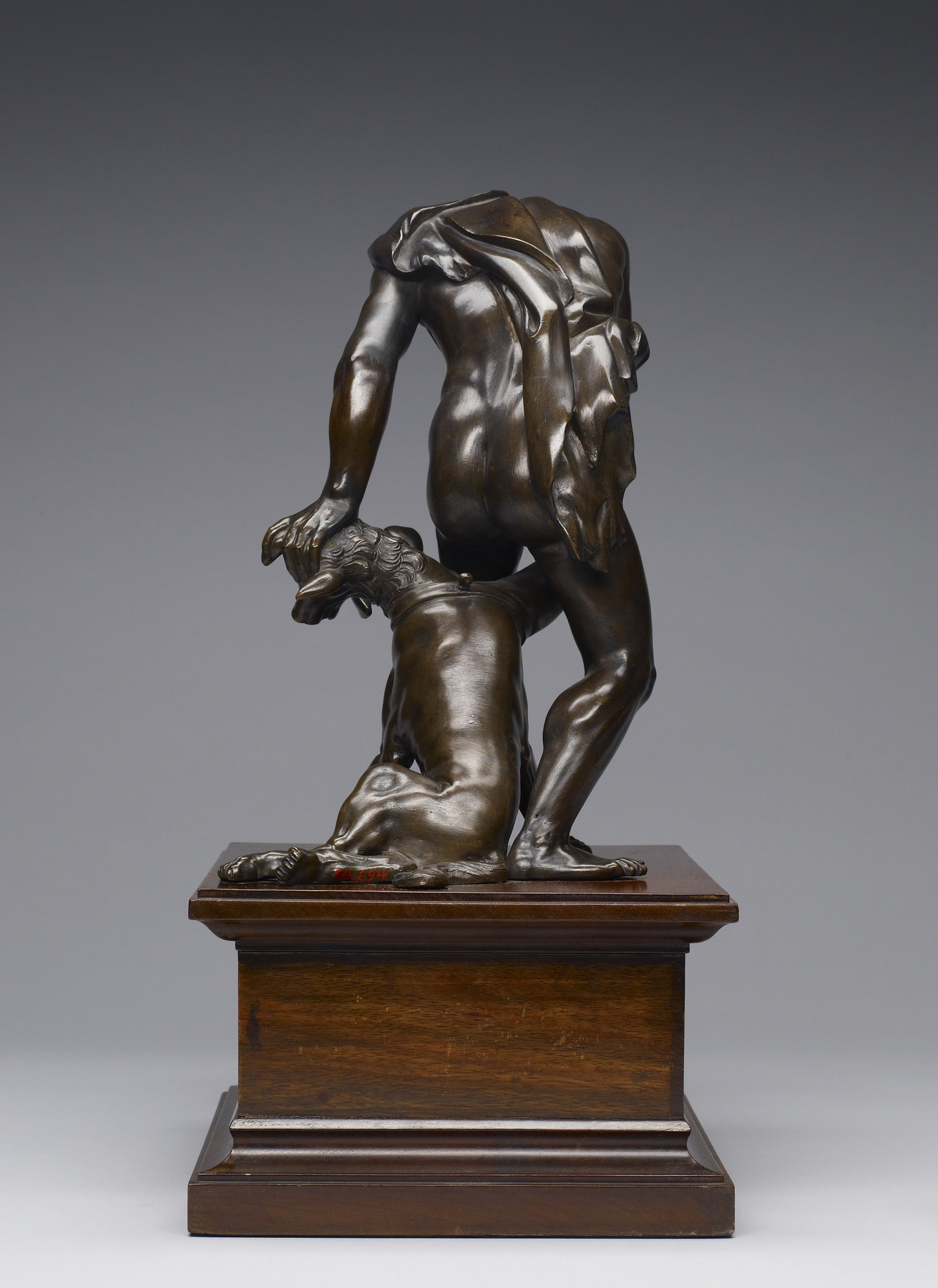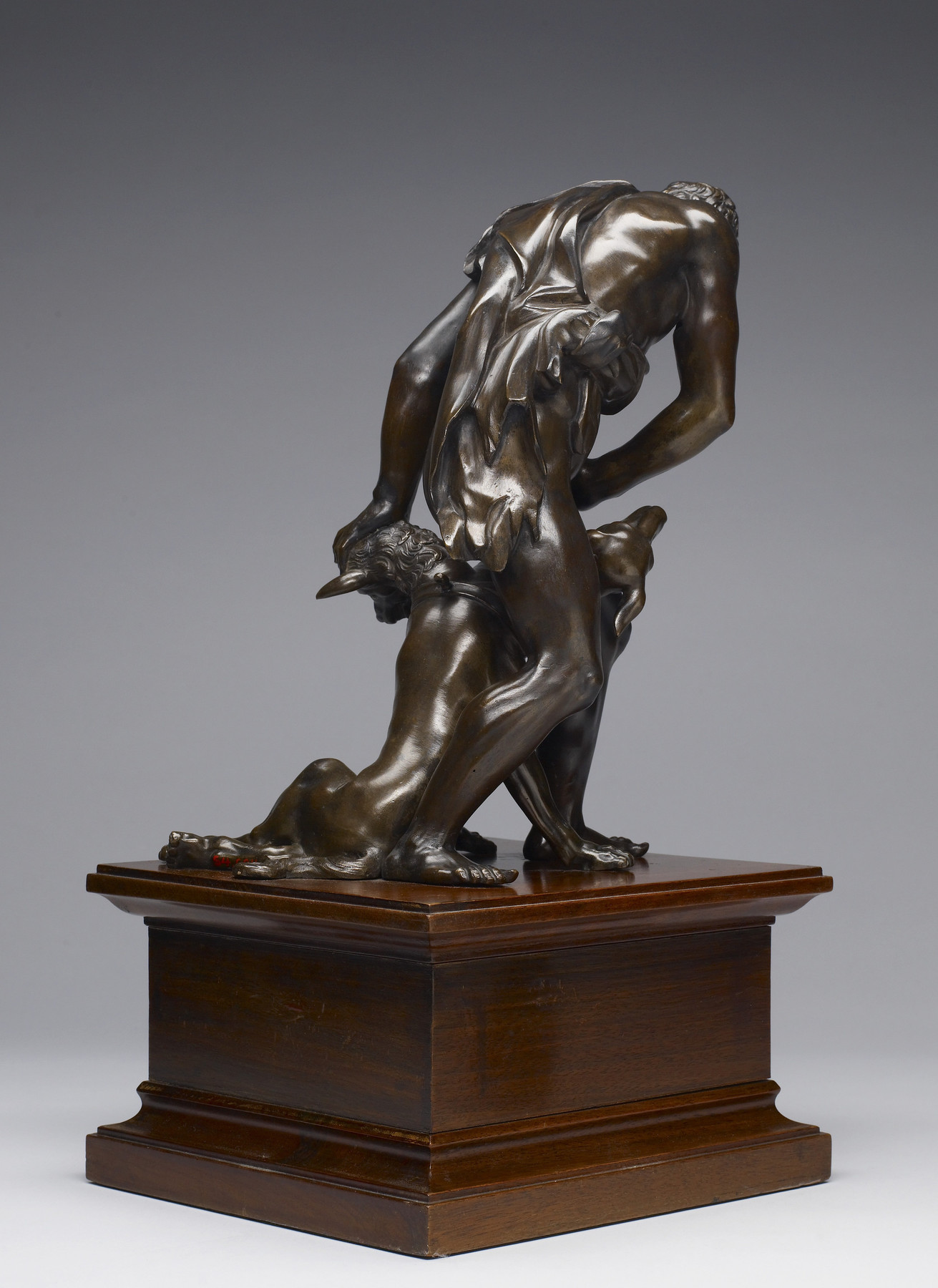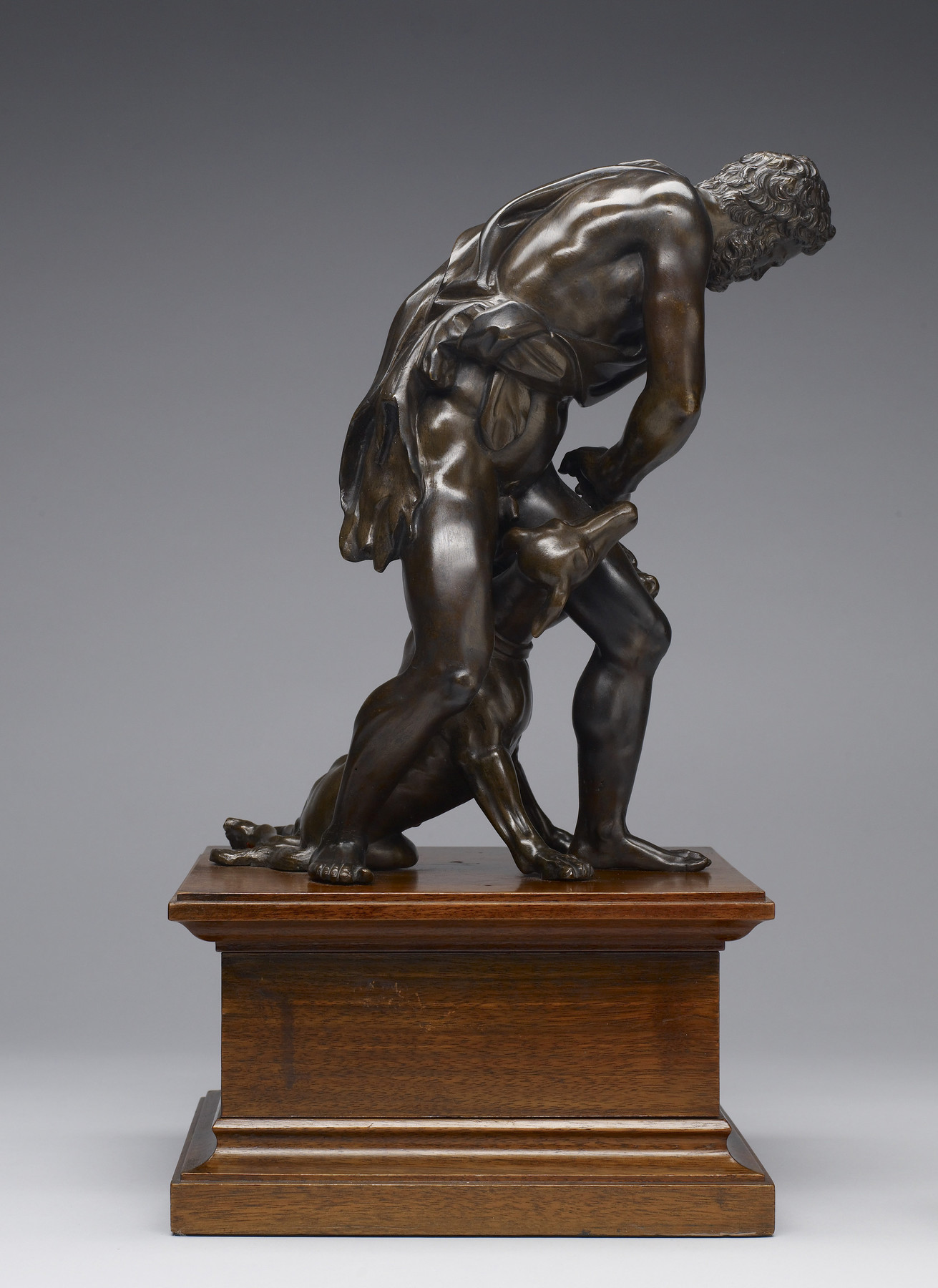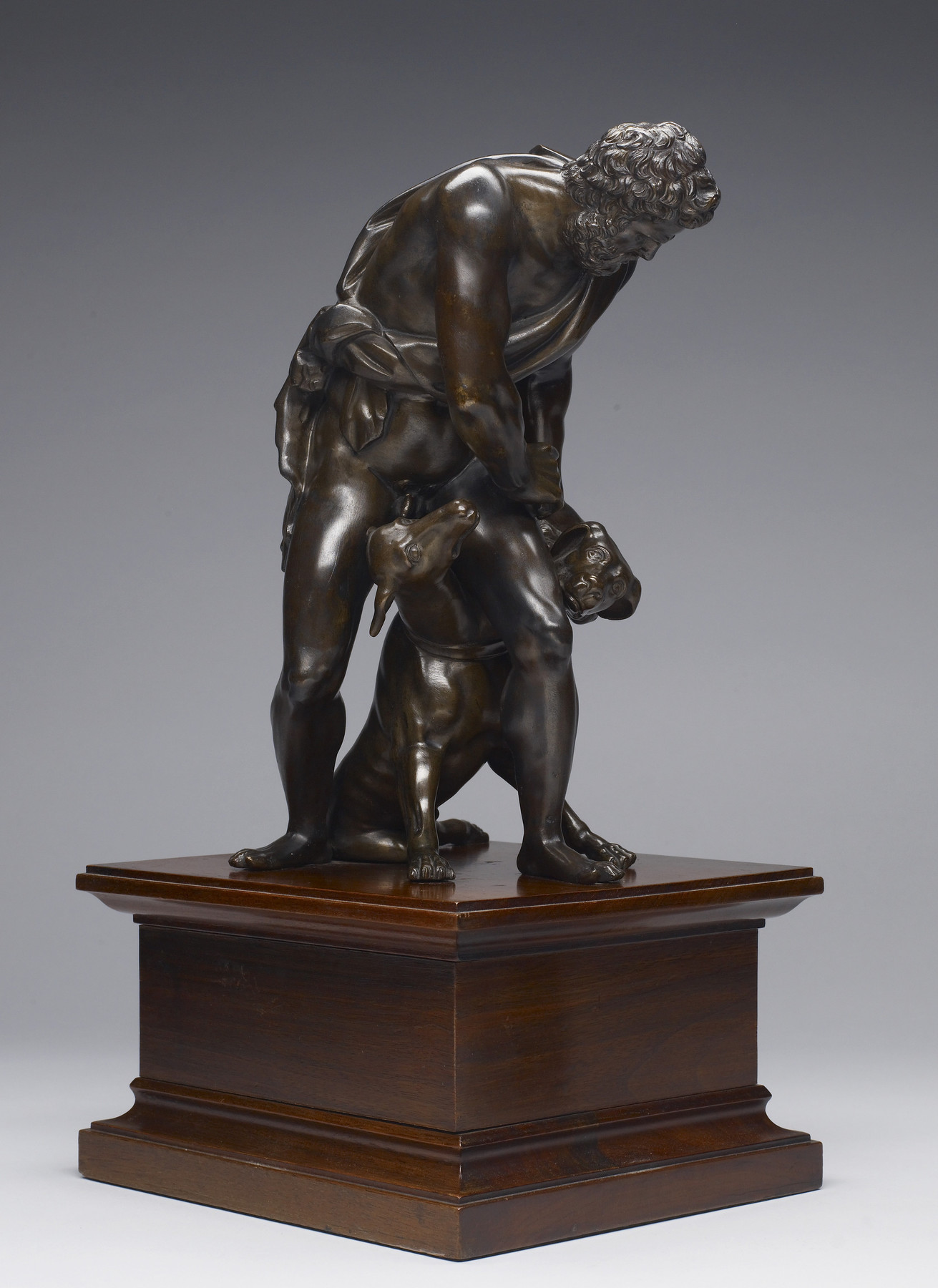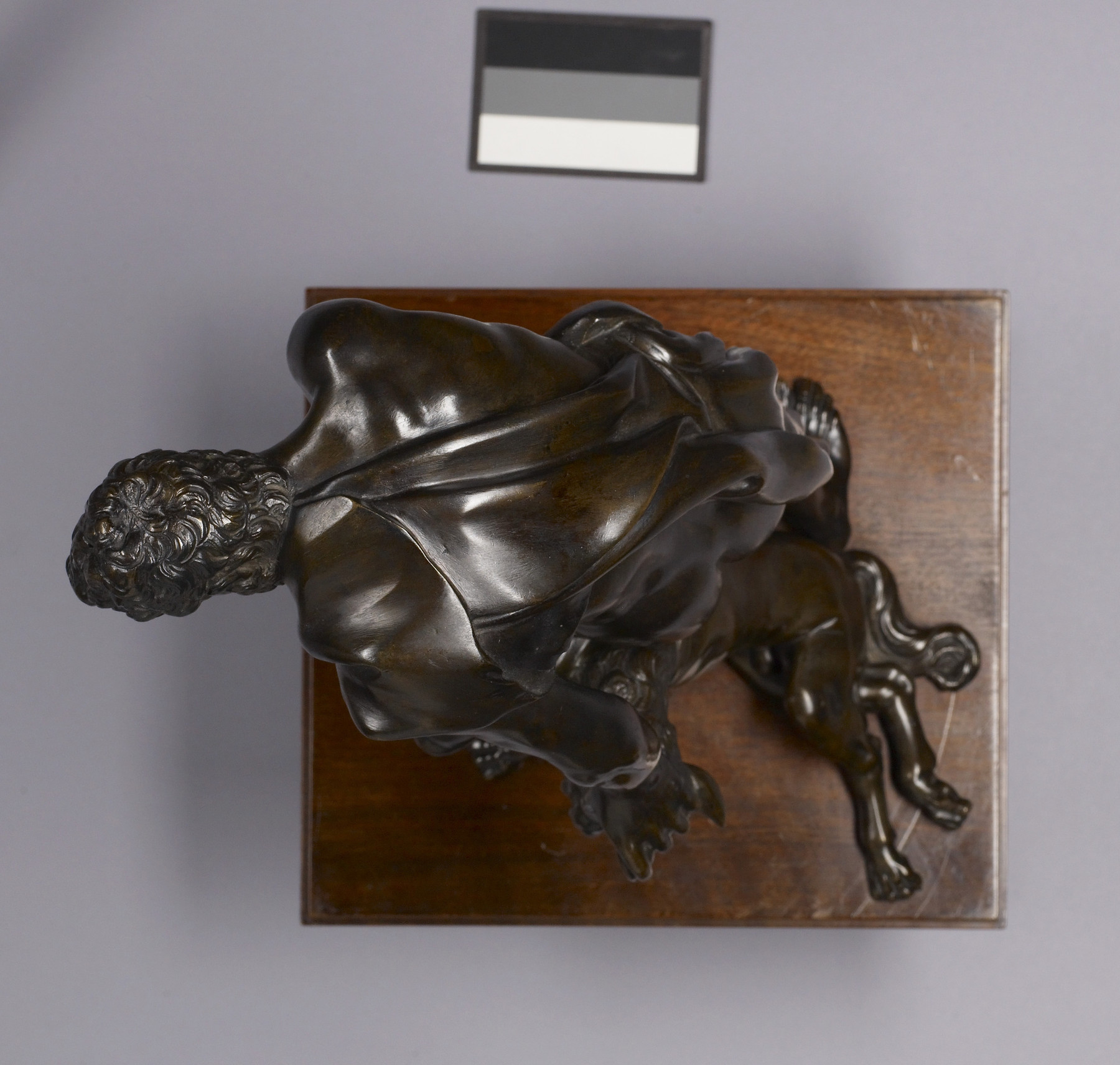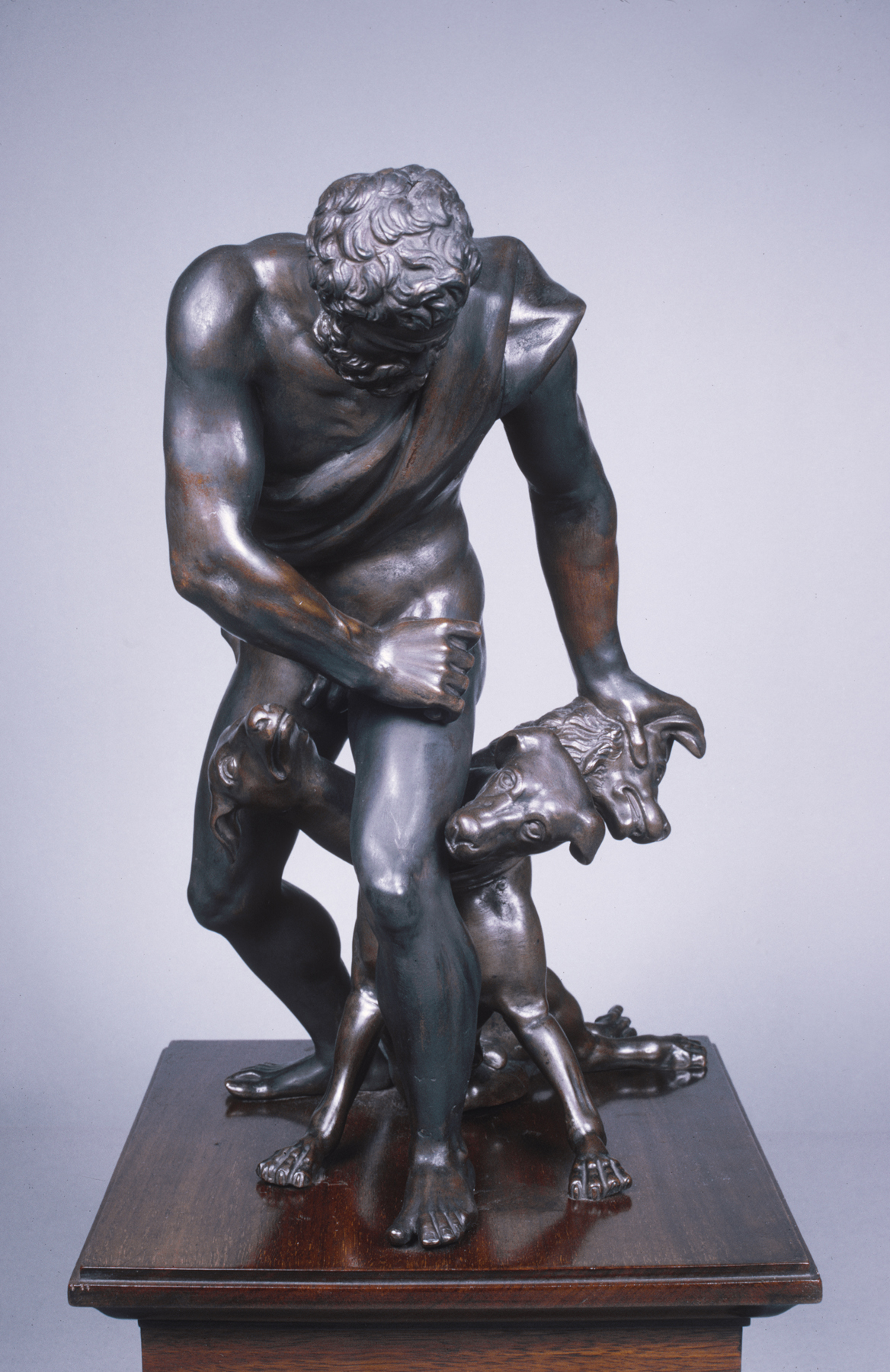Hercules and Cerberus
(Renaissance Europe )
The mythical Greek hero Heracles, known to the Romans as Hercules, was renowned for his great strength and the heroic deeds he performed, which were favorite subjects for painters and sculptors alike. Around 1580, Jean Boulogne (Flemish, 1529-1608), know as Giambologna, produced for Grand Duke Francesco I de' Medici (1541-87) of Tuscany a set of bronze statuettes of the Twelve Labors of Hercules, deeds which King Eurystheus ordered him to carry out, assuming them to be impossible.
These groups are characterized by highly dramatic poses, with the limbs of the figures spiraling outwards from center. The smooth surface of the bronze enhances the muscles of Hercules's imposing physique. These figures were extremely popular all over Europe and were replicated in great numbers, beginning in the artist's lifetime and continuing for decades. Individual casts are difficult to date, but this bronze as well as Walters 54.695 were surely made after the master's death. However, they preserve the character of Giambologna's originals and illustrate the refined taste of the Medici court towards the end of the 16th century.
The taming of the three-headed dog Cerberus, which guarded the entrance to Hades, the underground home of the dead in Greek mythology, was the 12th and last of Hercules's Labors.
Provenance
Provenance (from the French provenir, 'to come from/forth') is the chronology of the ownership, custody, or location of a historical object.
G. Durlacher, London, 1912 [mode of acquisition unknown]; J. + S. Goldschmidt, Frankfurt [together with Walters 54.695, part of a set of six, the other four in Salomon Collection until 1923, then dispersed]; Henry Walters, Baltimore, February 1926 [mode of acquisition unknown]; Walters Art Museum, 1931, by bequest.
Exhibitions
| 1983 | Fidoes and Heroes in Bronze. Dog Museum of America, New York. |
| 1978-1979 | Giambologna, 1529-1608: Sculptor to the Medici. Royal Scottish Academy of Painting, Edinburgh; Victoria and Albert Museum, London; Kunsthistorisches Museum, Vienna. |
Conservation
| Date | Description | Narrative |
|---|---|---|
| 5/4/1970 | Treatment | cleaned |
| 7/15/1974 | Treatment | cleaned; examined for condition |
| 2/28/1979 | Examination | examined for condition; examined for loan |
Geographies
Italy, Florence (Place of Origin)
Measurements
H: 11 5/16 in. (28.8 cm)
Credit Line
Acquired by Henry Walters, 1926
Location in Museum
Accession Number
In libraries, galleries, museums, and archives, an accession number is a unique identifier assigned to each object in the collection.
In libraries, galleries, museums, and archives, an accession number is a unique identifier assigned to each object in the collection.
54.694

